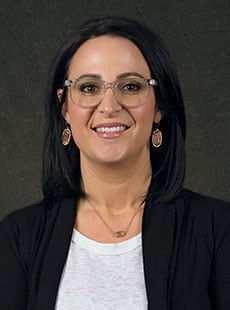 Course Introduction
Course Introduction
Core Standards of the Course
Strand 1
Students will understand the economic condition of scarcity where individuals, businesses, governments, societies, and nations must make choices in attempting to satisfy unlimited wants and needs using scarce resources.
Standard 1:
Define economics using the main ideas that wants and needs are unlimited but resources are limited, resulting in scarcity.
-
Identify the productive resources/factors of production (human resources/labor, natural resources/land, capital resources, and entrepreneurship) and give examples of each.
-
Determine the difference between a good and a service, and identify productive resources that are used in the production of various goods and services.
-
Explain the difference between wants and needs, and give examples of each.
-
Define scarcity
Standard 2:
Compare and contrast the concepts of opportunity cost and trade-offs using production possibilities curves.
-
Define opportunity cost.
-
Define trade-offs.
-
Give examples of opportunity cost and trade-offs as they apply to individuals, businesses, governments, societies, and nations.
-
Design a production possibilities curve to illustrate trade-offs.
Standard 3:
List the three basic economic questions (what will be produced, how will it be produced, and for whom it will be produced)
-
Define traditional, command, market, and mixed economic systems, and describe how different economic systems (traditional, command, market, mixed) address these questions.
-
Explain how the three basic economic questions were applied in the early United States (pure market economy).
-
Identify the economic systems used in countries around the world today.
Standard 4:
Use marginal analysis to illustrate the six-step decision making process.
-
Define marginal analysis.
-
Define the six-step decision making process.
-
Apply marginal analysis to an economic choice a student must make (e.g., buying a car, deciding on plans after high school, selecting a college/university, etc.).
-
Identify how a business might apply marginal analysis.
Strand 2
Students will understand that resources and goods/services are allocated by voluntary exchange and that economic markets are characterized by supply and demand, competition, incentives, and private property rights.
Standard 1:
Define markets and explain how they allocate scarce resources.
-
Describe how voluntary exchange between households and businesses creates a circular flow of money, products, and resources.
Performance Skills
Construct a circular flow model demonstrating the process of voluntary exchange among businesses/producers, households/consumers, and government.
Standard 2:
Determine why incentives, competition, voluntary exchange and property rights are important components of market economies.
-
Define incentives, competition, voluntary exchange, and property rights.
-
Give examples of how people respond predictably to incentives (entrepreneurship).
-
Describe the advantages of competition among households/consumers as well as among producers/businesses.
-
Explain barriers to entry (start-up costs, technology, patents, etc.)
-
Define profit motive
Standard 3:
Discuss the laws of supply and demand and explain price determination.
-
Define supply and demand.
-
Define the determinants of supply and demand.
-
Describe the determinants that cause a shift in supply.
-
Define diminishing marginal utility.
-
Identify how a business might apply marginal analysis (compare marginal benefit to marginal cost).
-
Apply marginal analysis to an economic choice a student must make (e.g., buying a car, deciding on plans after high school, selecting a college/university, etc.).
-
Use supply and demand schedules to plot curves on a graph to determine the market equilibrium or market clearing price.
-
Predict how changes/shifts in either supply or demand will affect the market price.
Standard 4:
Compare and contrast different market structures.
-
List the characteristics of the four market structures: perfect competition, monopolistic competition, oligopoly, and monopoly.
-
Identify business sectors that illustrate each of the market structures.
-
Explain the role of anti-trust laws as they apply to market competition.
Standard 5:
Discuss various economic theories and the economists who developed those theories as they relate to market economies.
-
Explain Adam Smith's theories of the invisible hand and laissez faire as discussed in his book, The Wealth of Nations.
-
Explain John Maynard Keynes' theories on economic stabilization through government intervention.
-
Explain Karl Marx's and Frederick Engels' theories on socialism and communism.
-
List some modern-day economists and their recent economic theories.
Strand 3
Students will recognize how fiscal and monetary policies assist individuals and groups in pursuit of economic well-being.
Standard 1:
Analyze how policymakers use fiscal policy to accomplish their goals regarding the U.S. economy.
-
Discuss the main economic goals of the U.S.-providing public goods, ensuring competition, dealing with externalities, and promoting economic stability, security, and growth.
-
Explain how fiscal policy is used by federal, state, and local governments.
-
Examine the different types of taxes governments use to raise revenue (e.g., progressive, regressive, proportional) and list the various taxes that governments levy (e.g., income tax, property tax, sales tax, etc.).
Standard 2:
Identify the four phases (peak, expansion, contraction, and trough) of the business cycle and examine the role of economic indicators in determining the level of business activity.
-
Discuss Gross Domestic Product (GDP), how it is measured, and how it can indicate decline, growth, recession, and recovery.
-
Define labor force and how unemployment is calculated.
-
Define the different types of unemployment (i.e., frictional, structural, cyclical, and seasonal).
-
Explain inflation and deflation, the factors leading to both, and how each is measured.
-
Define Consumer Price Index (CPI)
Performance Skills
Create and label a business cycle graphic.
Standard 3:
Define how the Federal Reserve uses monetary policy to control the fluctuation of the money supply.
-
Explain the responsibilities of the Federal Reserve (i.e., supervise and regulate banks, administer monetary policy, and provide financial services for the U.S. government and member banks).
-
Examine how the Federal Reserve uses monetary policy tools (discount rate, reserve ratio, buying & selling govt. securities) to stimulate the economy or control inflation
-
Compare fiscal and monetary policy, and summarize how the use of these policies affects individuals, businesses, governments, societies, and nations.
Standard 4:
Describe the functions of money and explain the role of financial institutions
-
Discuss the forms of exchange (barter, credit, money, etc.)
-
Explain the three functions of money (i.e., medium of exchange, store of value, measure of value (price)).
-
Describe the characteristics of money (i.e., durability, portability, divisibility, stability, and acceptability)
-
Discuss the value of money (i.e., commodity vs. fiat)
Standard 5:
Examine the role of entrepreneurs, businesses, and producers in market economies.
-
Define and analyze the different forms of business organization (i.e., sole proprietorship, partnership, and corporation).
-
Identify and analyze how businesses raise capital (i.e., debt financing vs. equity financing).
-
Determine how businesses earn a profit by creating value in their product (good, service, or idea).
Strand 4
Students will recognize how to increase productivity and the standard of living.
Standard 1:
Students will examine sources and types of funding.
-
Analyze how specialization and division of labor affect productivity, standard of living, and interdependence.
-
Determine how investments in human resources, physical resources, and technology affect productivity.
-
Explain how increased productivity can increase standard of living.
Standard 2:
Discuss the role of ethics in choices made by individuals, businesses, societies, governments, and nations.
Performance Skills
Evaluate a current ethical scenario.
Strand 5
Students will understand the economic impact of a changing global economy.
Standard 1:
Summarize the costs and benefits of international trade.
-
Define import and export.
-
Define trade deficit
-
Examine the impact of a country's balance of trade on its Gross Domestic Product and standard of living.
-
Analyze the impact of barriers to trade.
Standard 2:
Use absolute advantage and comparative advantage to make trade decisions.
-
Define absolute advantage.
-
Define comparative advantage.
-
Explain how comparative advantage is used in analyzing trade decisions.
Standard 3:
Explore the effects of currency exchange rates on international trade and travel.
-
Explain and calculate currency conversions.
-
Determine how the price of an imported good is affected by currency fluctuations.
-
Discuss how a country's exports can be impacted by currency fluctuations.
Standard 4:
Examine the challenges that nations and the world face as economies throughout the world develop and change.
-
Discuss how political systems and economies in many countries are changing.
-
Study the role of the U.S. in today's global economy.
-
Construct a circular flow model demonstrating the process of voluntary exchange among businesses/producers, households/consumers, and government.
-
Create and label a business cycle graphic.
-
Evaluate a current ethical scenario.
-
Analyze two current events.


 UTAH EDUCATION NETWORK
UTAH EDUCATION NETWORK

 Justin
Justin Braxton
Braxton Dani
Dani Kayla
Kayla Katie
Katie Rob
Rob Val
Val
